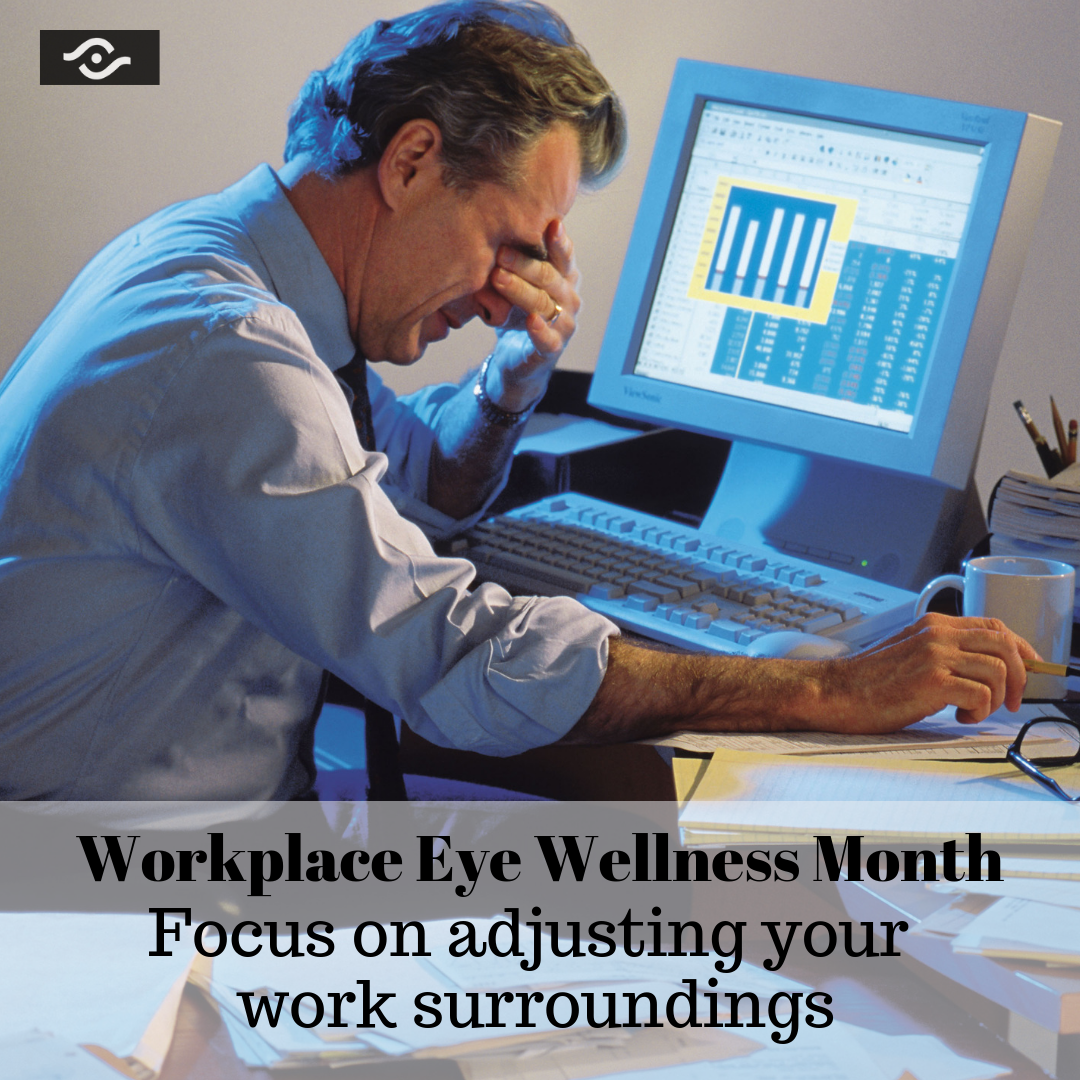March Workplace Eye Wellness Month/Focus on Adjusting Work Surrounding

The American Academy of Ophthalmology (AAO) and Eye Physicians and Surgeons (EPS) are observing Workplace Eye Wellness during the month of March. Eye wellness at work brings to mind avoiding accidents that injure the eye; however it is also about diagnosis or conditions that are caused by the workplace environment. For one, eyes need protection from too much screen time as this can be the cause of eye strain, dry eye, headaches and insomnia. Even though too much reading of books, magazines, etc. can also be harmful to the eye, it has been determined that the eyes blink less when focusing on computer screens or other digital devices and thereby loose lubrication.
So what can be done in the workplace to prevent these issues from occurring? The AAO provides a list of what can be put in place to alter the work environment. Try putting to use the following 6 tips.
Keep your distance: keep the monitor at arm’s length and position the screen or your seating so that the eye gazes slightly downward.
Reduce glare: put a matte screen filter over top of the glass computer screen.
Adjust lighting: eyes must work harder if the screen is brighter than the immediate surroundings. Room lighting can be adjusted and the contrast on the computer screen can be increased.
Give your eyes a break: follow the 20-20-20 rule which is to take a break every 20 minutes and look at another object 20 feet away for 20 seconds. When gazing into the distance your eyes are allowed to relax.
Keep eyes moist: it is a good idea to keep artificial tears where you can reach them to use for lubrication. Additionally a desktop humidifier would help.
Stop using devices before bed: blue light during wake time stimulates us but add that onto the time blue light received from devices at night and the natural sleep cycle is disrupted. Limiting time looking at devices would work well if screen time is ended one or two hours before bedtime.
Although eyestrain – or the results of eyestrain – can be frustrating, it usually goes away once eyes are rested. However if symptoms persist there may be an underlying eye problem which could become worse if not addressed. The answer to that is to see an ophthalmologist to have your eyes examined. EPS has a great time and you can make an appointment by calling 302-652-3353.
Information in this blog can be found at the following link: https://www.aao.org/eye-health/resources/articles
The AAO asks that instead of following Dr. Google, follow their website called EyeSmart.® There you will find a wealth of information including a section on “Ask an Ophthalmologist” and a place to sign up for a free newsletter. https://www.aao.org/eye-health


